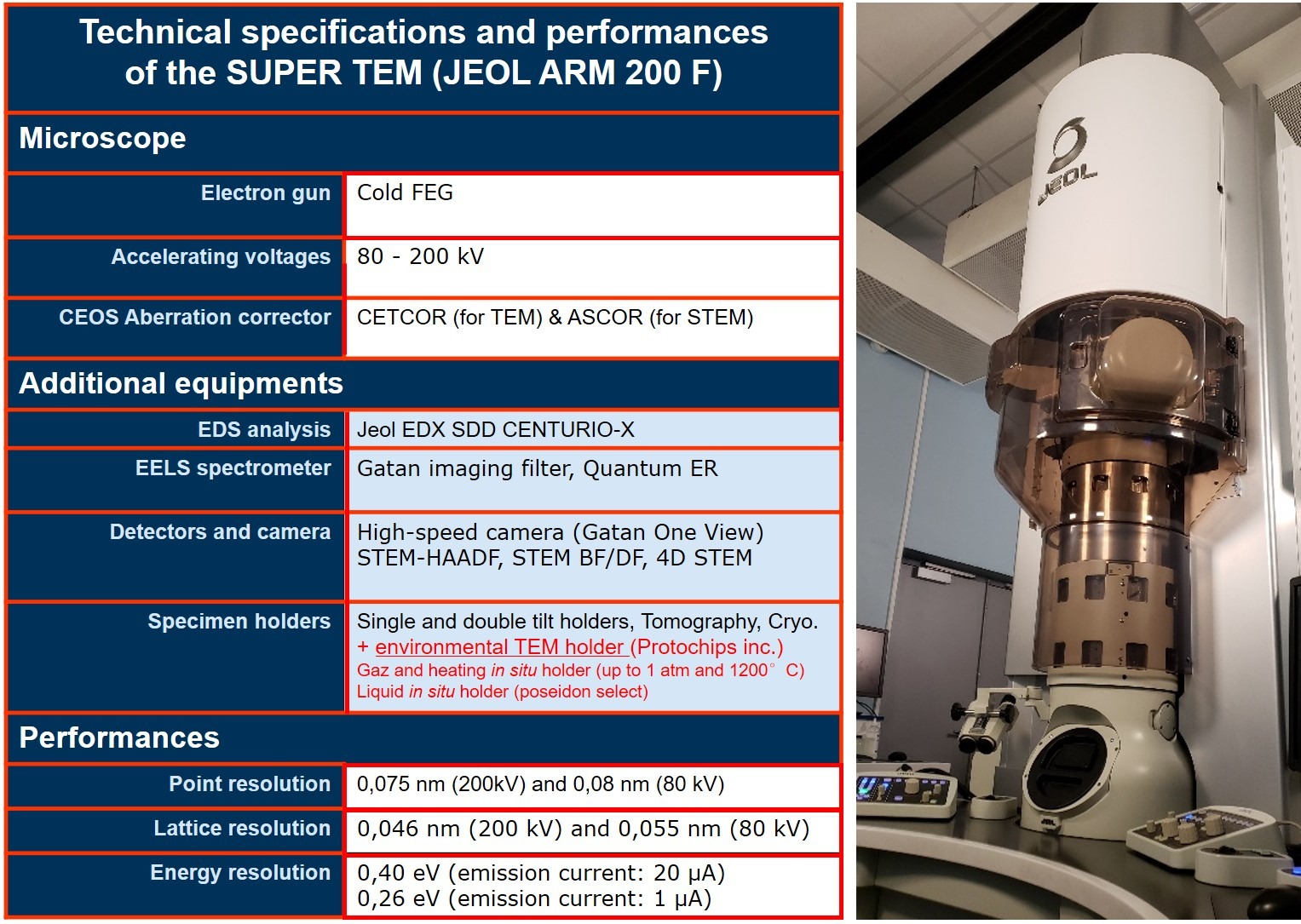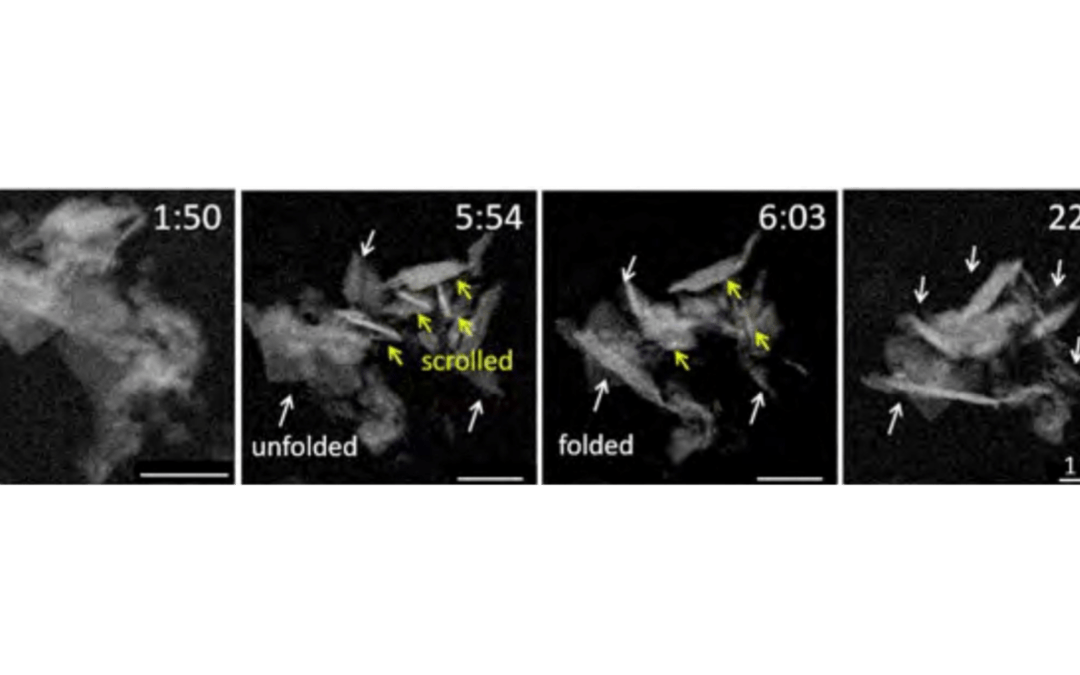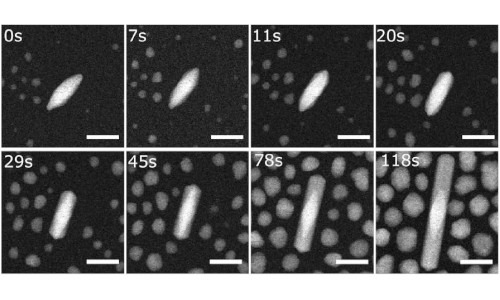The SuperTEM
The recent development of the aberration correctors and highly coherent electron sources has boosted the impact of electron microscopy on the characterization of matter at the atomic scale. Indeed, the last generation of instruments attains picometer-order spatial resolution, with an energy resolution of tenth of an eV. Both, high resolution imaging and analytical microscopy have enormously benefited from these technological advances, resulting in enhanced structural and chemical analysis of nanomaterials. Here we describe the performances of the Super TEM: a JEOL ARM 80 – 200 kV microscope, employing a Cold FEG and two aberration-correctors for the objective and condenser lens systems.
The Super TEM was installed for the first time, in September 2011 at Paris Diderot University. In 2014, in situ sample holders were implemented on the super TEM, offering unprecedented perspectives to study nanomaterials in liquid and gaseous environments at the atomic scale. The STEM corrector was installed in 2019 with high solid-angle EDX detectors.
This new generation of instrument is open to the scientific community through the Paris-Cité University Platform and the METSA national network.
This new generation of instrument is open to the scientific community through the Paris-Cité University Platform and the METSA national network.

À lire aussi

Neutralization of nanoparticles in lung cells
How does the body react to inhaled nanoparticles? In a collaboration involving researchers from the MEANS team at the MPQ laboratory, the evolution of molybdenum disulfide nanosheets in mouse lungs has been monitored for up to one month after inhalation....

Revealing the secrets of anisotropic nanoalloy synthesis
The synthesis of nanomaterials by chemical routes has long been developed empirically due to the lack of techniques to probe the dynamics of nano-objects in liquid media. In recent years, so-called "in-situ" approaches have emerged on all the techniques that allow...
